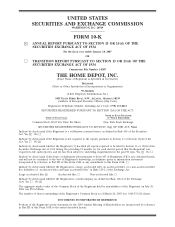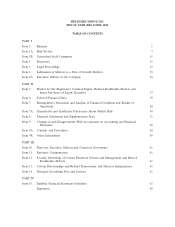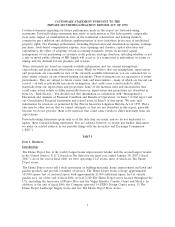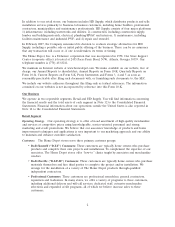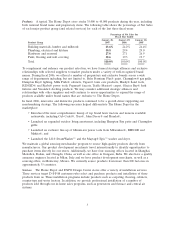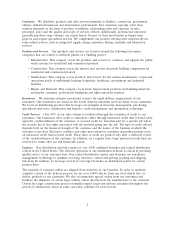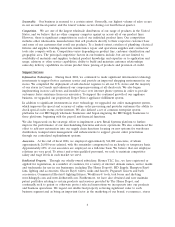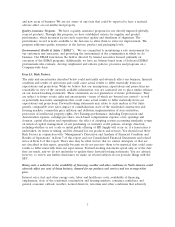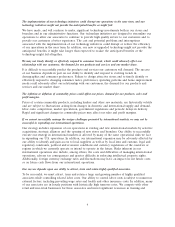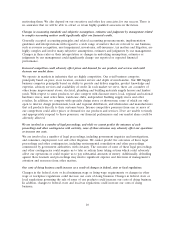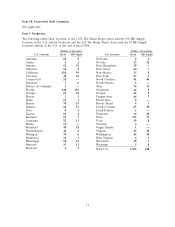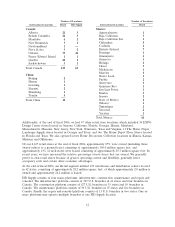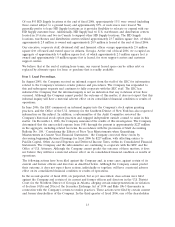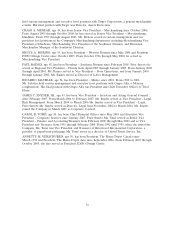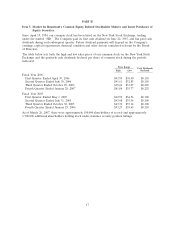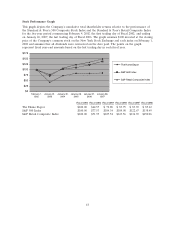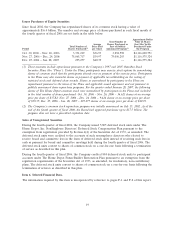Home Depot 2006 Annual Report Download - page 19
Download and view the complete annual report
Please find page 19 of the 2006 Home Depot annual report below. You can navigate through the pages in the report by either clicking on the pages listed below, or by using the keyword search tool below to find specific information within the annual report.The implementation of our technology initiatives could disrupt our operations in the near term, and our
technology initiatives might not provide the anticipated benefits or might fail.
We have made, and will continue to make, significant technology investments both in our stores and
branches and in our administrative functions. Our technology initiatives are designed to streamline our
operations to allow our associates to continue to provide high quality service to our customers and to
provide our customers a better experience. The cost and potential problems and interruptions
associated with the implementation of our technology initiatives could disrupt or reduce the efficiency
of our operations in the near term. In addition, our new or upgraded technology might not provide the
anticipated benefits, it might take longer than expected to realize the anticipated benefits or the
technology might fail altogether.
We may not timely identify or effectively respond to consumer trends, which could adversely affect our
relationship with our customers, the demand for our products and services and our market share.
It is difficult to successfully predict the products and services our customers will demand. The success
of our business depends in part on our ability to identify and respond to evolving trends in
demographics and consumer preferences. Failure to design attractive stores and to timely identify or
effectively respond to changing consumer tastes, preferences, spending patterns and home improvement
needs could adversely affect our relationship with our customers, the demand for our products and
services and our market share.
The inflation or deflation of commodity prices could affect our prices, demand for our products, sales and
profit margins.
Prices of certain commodity products, including lumber and other raw materials, are historically volatile
and are subject to fluctuations arising from changes in domestic and international supply and demand,
labor costs, competition, market speculation, government regulations and periodic delays in delivery.
Rapid and significant changes in commodity prices may affect our sales and profit margins.
If we cannot successfully manage the unique challenges presented by international markets, we may not be
successful in expanding our international operations.
Our strategy includes expansion of our operations in existing and new international markets by selective
acquisitions, strategic alliances and the opening of new stores and branches. Our ability to successfully
execute our strategy in international markets is affected by many of the same operational risks we face
in expanding our U.S. operations. In addition, our international expansion may be adversely affected by
our ability to identify and gain access to local suppliers as well as by local laws and customs, legal and
regulatory constraints, political and economic conditions and currency regulations of the countries or
regions in which we currently operate or intend to operate in the future. Risks inherent in our
international operations also include, among others, the costs and difficulties of managing international
operations, adverse tax consequences and greater difficulty in enforcing intellectual property rights.
Additionally, foreign currency exchange rates and fluctuations may have an impact on our future costs
or on future cash flows from our international operations.
Our success depends upon our ability to attract, train and retain highly qualified associates.
To be successful, we must attract, train and retain a large and growing number of highly qualified
associates while controlling related labor costs. Our ability to control labor costs is subject to numerous
external factors, including prevailing wage rates and health and other insurance costs. In addition, many
of our associates are in hourly positions with historically high turnover rates. We compete with other
retail and non-retail businesses for these associates and invest significant resources in training and
9


